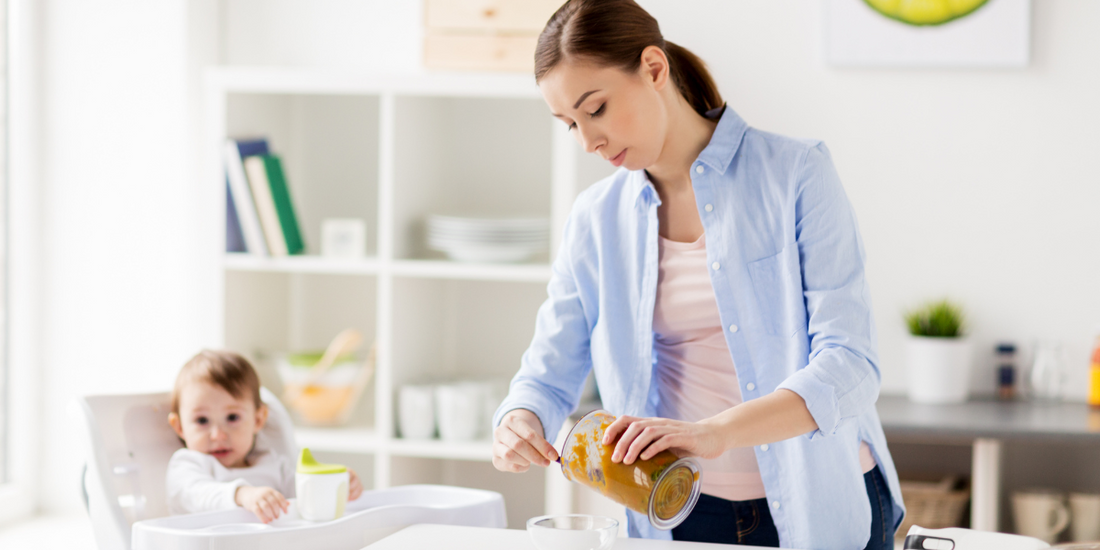Introducing solid foods to your baby is an exciting milestone in their development. As a parent, you want to provide your little one with the healthiest and most nutritious meals possible. Making homemade baby food allows you to have control over the ingredients and ensure that your baby receives wholesome, preservative-free meals. A blender can be a valuable tool in this process, but you may wonder, "Can I use my blender to make baby food?" In this article, we will explore the benefits of using a blender for homemade baby food and provide you with useful tips to get started.
Blender Benefits for Homemade Baby Food
Blenders are versatile kitchen appliances that can simplify the process of preparing baby food. Here are some benefits of using a blender for making nutritious meals for your little one:
- Puree Consistency: Blenders excel at creating smooth and creamy purees, which are ideal for introducing solids to babies. With the right blender, you can achieve the perfect texture for your baby's delicate palate, making it easier for them to consume and digest.
- Nutrient Retention: Making baby food at home allows you to preserve the maximum amount of nutrients in the ingredients. Blending fruits, vegetables, and grains helps retain vitamins, minerals, and fiber that are crucial for your baby's growth and development.
- Ingredient Control: When you make baby food using a blender, you have full control over the ingredients you use. You can choose organic produce, locally sourced fruits and vegetables, and avoid additives, preservatives, and excessive salt or sugar that are often found in commercial baby food.
- Cost Savings: Homemade baby food can be a cost-effective alternative to store-bought options. By utilizing fresh, seasonal ingredients and buying in bulk, you can create a variety of baby food flavors at a fraction of the cost of pre-packaged options.
Tips for Using Your Blender to Make Baby Food
Now that you know the advantages of using a blender for homemade baby food, here are some tips to help you get started:
- Choose the Right Blender: When selecting a blender for making baby food, opt for a model that offers sufficient power and versatility. Look for blenders with a high-powered motor, sharp blades, and variable speed settings. This will ensure that you can handle different types of ingredients and achieve the desired puree consistency.
- Sanitize and Prepare Ingredients: Before preparing baby food, make sure to thoroughly wash and sanitize all fruits, vegetables, and grains. Remove any peels, seeds, or pits, and cut them into small, manageable pieces. Steaming or boiling certain ingredients can also make them easier to blend.
- Gradually Introduce Texture: As your baby progresses in their food journey, you can gradually introduce more textured purees. Initially, blend the ingredients into a smooth consistency and then gradually increase the blending time or use the pulse function to create a slightly chunkier texture.
- Add Liquid as Needed: Depending on the ingredients you are blending, you may need to add liquid to achieve the desired consistency. Use breast milk, formula, or water to thin out the puree as necessary. Start with small amounts and adjust according to your baby's preference.
- Portion and Store: Once you have prepared the baby food, portion it into individual containers or ice cube trays for easy storage and portion control. Label and date each container before freezing. Most purees can be stored in the freezer for up to three months.
- Thaw and Reheat Safely: When ready to serve, thaw the frozen baby food in the refrigerator or defrost it using the microwave or stovetop. Ensure the food is heated evenly and reaches an appropriate temperature before feeding it to your baby. Stir the food well to distribute heat evenly and always test the temperature before serving.
- Experiment with Flavors: Homemade baby food allows you to introduce a wide variety of flavors to your little one. Blend different fruits, vegetables, and grains to create unique combinations and expose your baby to a diverse range of tastes. Be mindful of potential allergenic foods and introduce them one at a time, watching for any adverse reactions.
- Practice Food Safety: It's crucial to prioritize food safety when preparing baby food. Always wash your hands thoroughly before handling ingredients and ensure that your blender, utensils, and storage containers are clean and sanitized. Avoid cross-contamination by using separate cutting boards and utensils for raw meat, poultry, or fish.
- Be Mindful of Age-Appropriate Foods: As your baby grows, their nutritional needs evolve. Introduce age-appropriate foods and textures gradually, following your pediatrician's guidance. Blend ingredients according to your baby's stage of development, taking into consideration their ability to handle thicker textures and chewable foods.
- Enjoy the Process: Making homemade baby food can be a rewarding and enjoyable experience. Embrace the opportunity to be creative in the kitchen and bond with your baby through the introduction of new flavors and textures. Engage your baby in the process by letting them observe and participate in age-appropriate ways, such as mashing or feeding themselves with supervision.
Conclusion
Using a blender to make homemade baby food offers numerous benefits, including the ability to control ingredients, achieve desired puree consistency, and retain maximum nutrients. By following the tips provided in this article, you can confidently use your blender to create nutritious and flavorful meals for your baby. Remember to choose the right blender, sanitize ingredients, gradually introduce textures, and practice food safety. Enjoy the journey of nourishing your little one with homemade goodness and providing them with a strong foundation for healthy eating habits.

